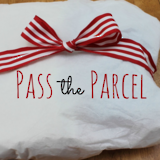Why it's good for pre-schoolers to set goals
|
Goal setting for pre-schoolers is not something we hear about often, but it’s never too early to start. It’s a great way to build their self-confidence and a valuable life-long skill. Goal-setting helps them to identify what is wanted, and that if they set their minds to something, they can achieve it. Setting goals with your children will direct their efforts and encourage them to achieve success.
|
You might also be interested in ...
Kids traditional party games
Kids traditional birthday party games are still so much fun! Everything from Pass the Parcel to Musical Chairs, Pin the Tail on the Donkey, Stuck in the Mud and everything in between. Check out our list of fun party games and how to play them. They’ll keep the kids amused for hours!
Mermaid party ideas for toddlers & preschoolers
Why not celebrate your little one's special day with a mermaid birthday party! Check out these ideas on mermaid party food and decorations, costumes and games you can play. You can also use some of these ideas for an under the sea party, pirate party and beach party.







Goal setting for pre-schoolers is not something we hear about often, but it’s never too early to start.
It’s a great way to build their self-confidence and a valuable life-long skill.
Goal-setting helps them to identify what is wanted, and that if they set their minds to something, they can achieve it.
Setting goals with your pre-schooler, however small, will direct their efforts and encourage them to achieve success as they get older.
We take a look at ways you can set goals with young children, questions you can ask and different types of reward charts and jars. Just adjust them if need be to suit the age of your child.
Setting goals
1. Talk about the benefits of goal setting
For most pre-school children, goal setting will be something new. Talk to them about how goals can help them achieve things that are important in their lives.It is also important to chat to them about what the things are that they would like to achieve; not what you would like them to achieve or the things that you feel would benefit them.
Children must want to take ownership and responsibility over the process.
You may feel that there are areas that need improvement, so explore and suggest ideas by asking indirect questions such as: “How would you feel if you could…?”
2. Identify the goal
It is important that any goal they set is achievable, but also challenging.The goal must be detailed and measurable. For example, ”I want to be able to dress myself” is a positive desire, but not a defined goal.
“I want to be able to put on my own t-shirts by the end of the week” is a more specific and achievable goal.
It is also important that the goal is something that your child can have a high level of control over.
3. Decide on a time frame
Setting a goal deadline is essential. Goals can be short-term or long-term, and smaller goals can be set that lead up to the final goal.This will allow your child to succeed along the way, which will boost their self-confidence and encourage them to continue.
The time-frame will depend on your child’s age, personality and the actual goal.
Younger children need short-term goals because they struggle to think long-term and you do not want them to lose interest.
4. Plan the steps
The steps implemented to reach the goal need not only build up your child’s skills, but also help to create a plan that your child can follow on a daily or weekly basis.The steps will also provide your child with opportunities to achieve small successes along the way.
Chat to your child about how they can achieve their goal and the steps that they can conquer in order to reach the final goal. Your child should have input in the final plan.
Questions to help the discussion with your child once they've decided on their goal could include:
5. Observe progress
Your pre-schooler will need to be encouraged along the way.Congratulate them when they achieve their smaller goals and encourage them when times are tough.
Remember that it's important that they stay in control.
6. Celebrate achievement
There is no greater feeling in the world than setting a challenging goal, working hard to achieve it, and being successful.It is a skill that can be encouraged in childhood and continued throughout adulthood.
When your pre-schooler achieves their goal they should feel very proud and of course, so should you.
Think of something that you can do as a family to celebrate their success.
Goal charts or jars
No matter what the goal, children enjoy and benefit from a visual method that tracks progress.
You and your pre-schooler can create some effective goal-setting charts or jars. It’s great fun, acknowledges their achievement and encourages them to keep going.
Types of goal charts and jar
Sticker chart
Colouring in chart
Marble or lolly jars
Tips for using goal charts and jars
Check out our other Hot Topics on:
- Introducing maths to pre-schoolers
- Learning for life
- Pre-school bucket list
Source: Article written by Emma Loggenberg at Tuputupu Kids.